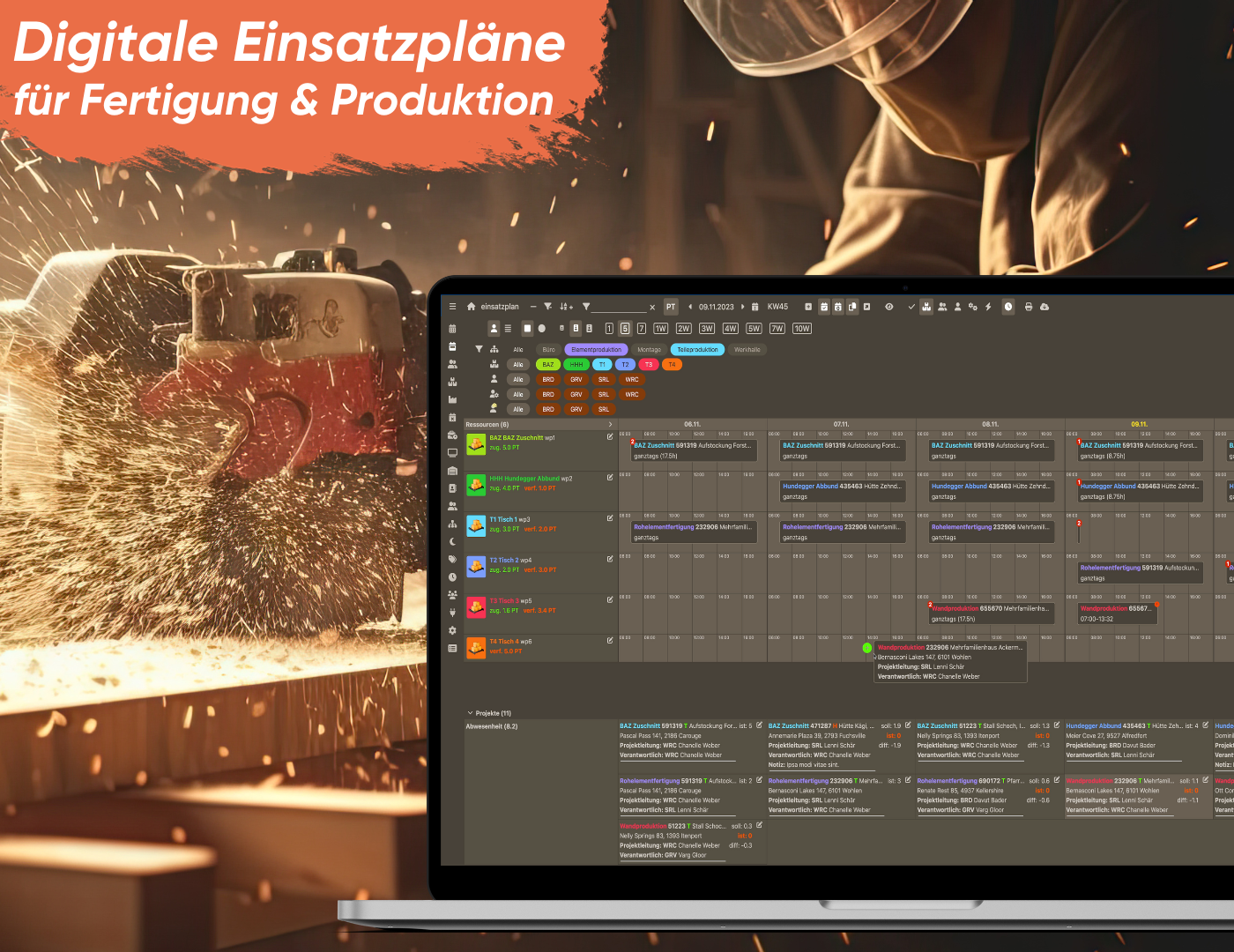How did the collaboration with Renggli in developing our manufacturing deployment plans come about?
The deployment plans for manufacturing emerged as a joint project: Renggli, from the customer side, expressed their need for deployment plans for their operation, not only for assembly but also specifically for manufacturing. We took this input with interest and were willing to start a longer-term joint project. The first step was to get to know and understand Renggli's manufacturing processes in detail. This was followed by step-by-step development in close cooperation and with several visits on-site. After intensive exchange, several revisions, and fine-tuning the last details, the project has culminated in the implementation of our manufacturing planning.
How Renggli implements the manufacturing deployment plans
To learn how our manufacturing deployment plans generally work, check out this article.
Good day, Michael. Can you first say a few sentences about the company Renggli?
Renggli is a large timber construction company with a production workshop in Schötz, in the Canton of Lucerne. We have about 100 to 120 employees across all departments, with approximately 50 employees in production, manufacturing elements for timber, hybrid, or modular constructions.
How did you come across Vanillaplan?
We wanted to centralize our Excel and MS-Project spreadsheets. Since it was very time-consuming to plan with our company size, we started looking for a new program that could support our endeavor. We informed ourselves about various providers and conducted an evaluation of which tool would be suitable for us. That's how we stumbled upon Vanillaplan. Additionally, we heard a lot of positive things about it from our environment. So, the path led to Vanillaplan from several directions.
What convinced you to collaborate with Vanillaplan?
On the one hand, definitely the interest in a kind of lighthouse project that could be jointly developed and advanced. On the other hand, Vanillaplan is very flexible and responsive to customer wishes. That ultimately convinced us to establish something together.
What was the collaboration with Vanillaplan like in developing the manufacturing deployment plans?
We placed our customer wishes and also contributed what could make sense for other timber construction companies that have a similar system to ours. Through regular meetings, we stayed in continuous exchange. We constantly received a demo version with the latest updates, tested them, and provided feedback, in terms of "this would still be cool," "this is already great," or "something is not working yet."
Let's move on to the manufacturing deployment plans. How many employees are you currently managing in manufacturing?
My team in element production includes about 24 employees as core staff. Additionally, there are always interns and temporary workers, so the total can quickly rise to 30 to 35 people.
What does the planning process in the deployment plans for manufacturing at Renggli look like?
We divide the planning process into personnel planning and production planning; that's what we call it at Renggli.
For personnel planning, I have my employees, who are neatly recorded and listed with photos, in the resources. In the team view, I plan the people at the appropriate workstation where they are intended to be. Usually, I assign personnel about two to three weeks into the future. Here I can see exactly where I have too few or too many people, where I need to scale up or redistribute. I make all changes live there, so if, for example, an employee is sick, I take them by drag and drop and simply move them down to absence. This way, I always have a full overview.
In production planning, the aim is to schedule the projects at the workstations. For this, I use the workstation list view almost 99% of the time. Here I see my different tables, meaning I have a table 1, table 2, table 3, table 4, etc., my regular tables where I can deploy personnel.
Then, of course, experience and knowledge as well as close exchange with the respective project managers are required to decide at which workstation to record a project for a specific period. I can specifically fill my projects into the lists and quickly move them back and forth between different stations by drag & drop. This gives me a great overview of when something will be finished, in what timeframe it is being carried out, and how many hours are budgeted. I see, for example, where it gets too tight for the assembly department, where I'm too early, how much personnel I need, and so on.
Also very handy are the filter functions: If I'm looking for an object, I can quickly enter it into the filter or specifically hide and show stations. That definitely saves time.
What do you like best about the manufacturing deployment plans and what is the biggest added value compared to the previous planning?
The biggest added value for me is the timeliness and the dynamic planning. You don't need to maintain a parallel list but always have the current status, and each person sees what will be completed when. If I move projects to other workstations, I don't need to delete and reinsert them but can place them precisely at the right location. I see how much longer it takes when I move a project there or how much faster it goes when I schedule more employees. That is really great with the dynamic planning.
We thank Michael Wyss for the interview and are pleased about the successful implementation of our manufacturing deployment plans.
-1708440372.png&w=1536&q=100)

